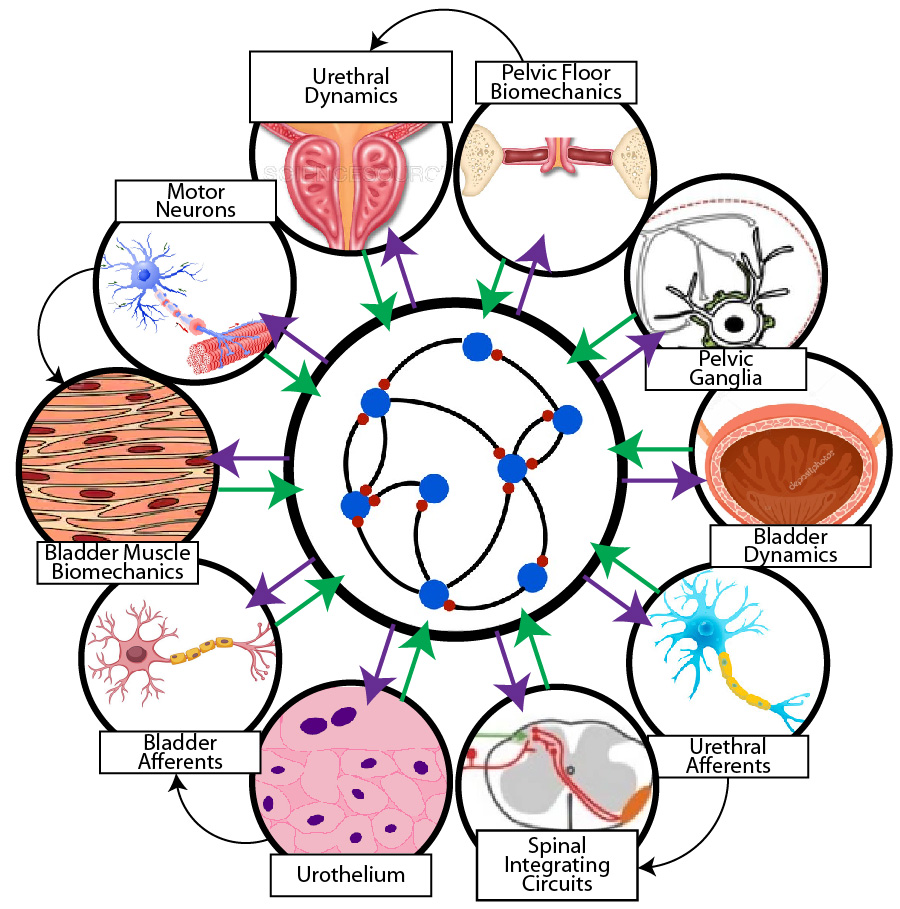I’m very excited to announce (September 2022 throwback) that NIDDK at NIH is supporting me to lead a big, interdisciplinary team to invent a new mathematical infrastructure to model the lower urinary tract (LUT) at the systems level. The work spans physiology, applied math, and machine learning researchers at four universities. It is an academic dream-come-true to work across fields on a big new idea with big potential. The goal is to use the new model to simulate the LUT in enough functional detail to predict the effects of an improve nerve stimulation (neuromodulation) therapy for LUT disease.
A major obstacle for optimizing LUT neuromodulation is our incomplete understanding about how the effects of activating a nerve propagate through the complex web of reflexes and biomechanics that govern LUT behavior. The LUT is too complex and we lack too much physiology knowledge to model it at the system level using traditional dynamical systems. We don’t have the data for pure data-driven approximations either (ANNs). Our approach is to link these styles together to get the best of both. We laid the theoretical groundwork for this hybrid modeling approach (with support from the SPARC program), plugging the mechanistic gaps in our ODE physiology models with ANNs, and training the entire system end-to-end. (e.g., see 10.1109/EMBC46164.2021.9631038) Looking forward to the new mathematical tools we will develop, the new understanding of neurourology we will uncover, and the new therapies we can prototype. “What I cannot create, I do not understand.”

